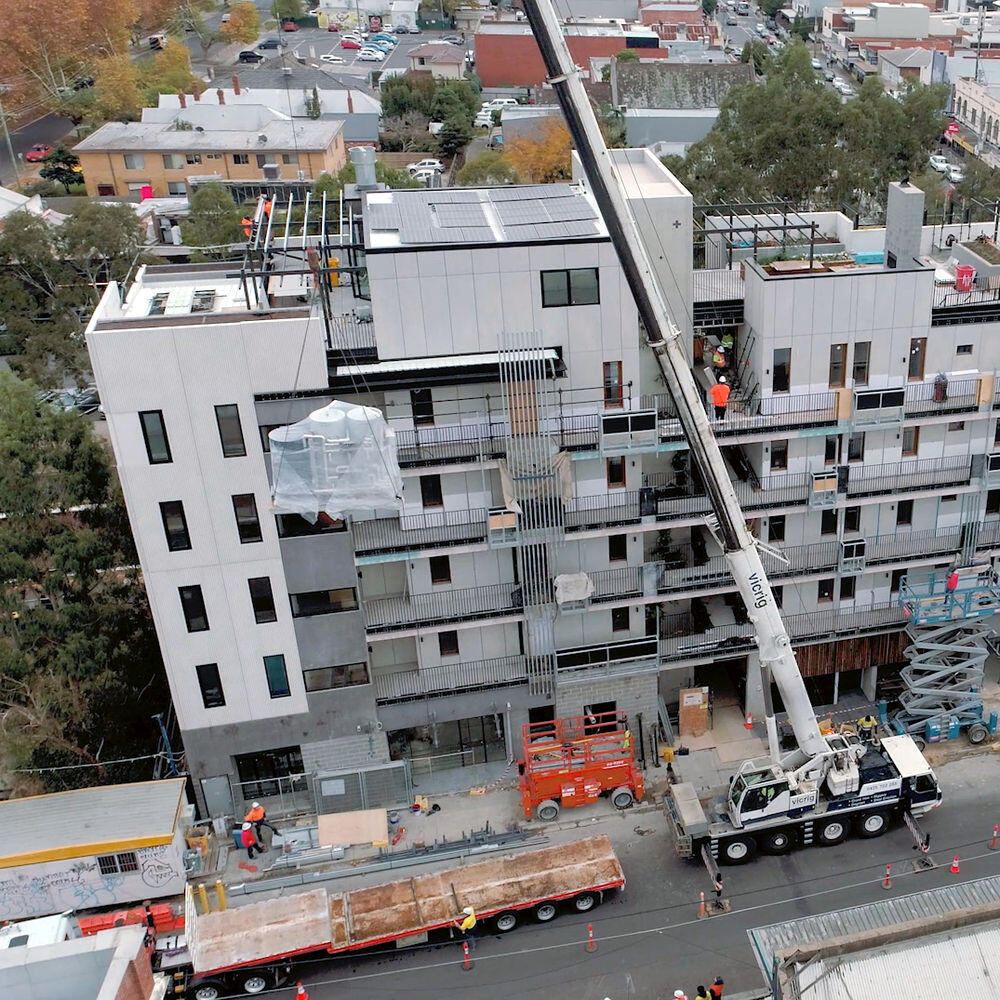Prefabrication of Commercial Hot Water Systems
The method itself is said to have been inspired by building techniques tracing back to the Mesopotamian civilization, and has been around for thousands of years. The world’s oldest known engineered roadway, the Sweet Track, was built in England using prefabricated timber sections around 3,800 BCE. Around 1837, prefabricated farm buildings and bungalows were becoming popular as well. Even Gustav Eiffel’s temporary tower in Paris was assembled out of prefabricated iron elements back in 1889.
In the HVAC industry, however, particularly in the design and construction of commercial hot water systems, the use of prefabrication is relatively new, although some European, American, and Asian HVAC contractors have been doing it for some time. Now, with Automatic Heating Global’s innovative engineering, many more Australian contractors are reaping the time and cost saving benefits of prefabrication with our custom designed skid mounted commercial heating and domestic hot water system packages.
Offsite Prefabrication Advantages
One of the major advantages of HVAC prefabrication over traditional construction is its improved efficiency, accuracy, and less time in assembling the components since the assembly happens in a controlled environment, not in a busy construction site. This results in consistent quality, tighter joints, better air filtration, better insulation, shorter time frame, and higher plant efficiency. By pre-fabricating offsite, the system can be pre-commissioned and tested for potential problems before being delivered to the construction site, which allows for a smoother commissioning once installed. Furthermore, since the components are usually modular, prefabricated units are flexible in a way that they can easily be disassembled and relocated to different sites. This is advantageous not only for the builder, but also for the owner who may want to relocate the structure in the future.
Moreover, since most of the work happens off-site, this means less traffic in the construction site, which could give more time and space for other subcontractors doing traditional construction to finish their job. This translates to higher labor productivity and faster overall construction duration for the whole project. Less traffic in the job site also means less exposure of workers to physical hazards that are usually present in this environment, including noise, radiation, vibration, extreme weather, falls and presence of foreign debris.
Lastly, prefabrication generally reduces costs due to savings in labor costs gained from doing most of the job off site where the workers’ productivity is maximized. This is true especially if a component is repeatedly used in the project. A mass-produced component made in an assembly line is generally cheaper than a similar element constructed by a highly paid skilled worker on site. Moreover, moving assemblies from a factory tends to cost less than moving raw materials to each site.
All of these benefits make prefabricated commercial hot water systems an attractive option for builders, designers, and owners alike. And with the emergence of new trends like building information modelling and lean construction, prefabrication is likely to increase in the years to come.


We invite you to join Rohan Hocking for a quick video intro to a recently completed Revere™ CO2 Heat Pump prefab package system.
Designed to deliver hot water for heating and DHW efficiently at low ambient temperatures, this custom designed prefabricated system comprises the Revere™ CO2 Heat Pump and Thermex Stainless Steel tanks. Engineered for an exciting new apartment complex in Hobart, this package offers an average COP of up to 4.2, fossil fuel free operation and uses CO2 as the refrigerant which has zero ozone-depleting potential (ODP).
The DHW system is also WaterMark approved and can be engineered to suit the specific peak hot water demands of your project.
Call us for a free consultation on 1800 337 959 or register your enquiry via the Heat Pump Enquiry Form

